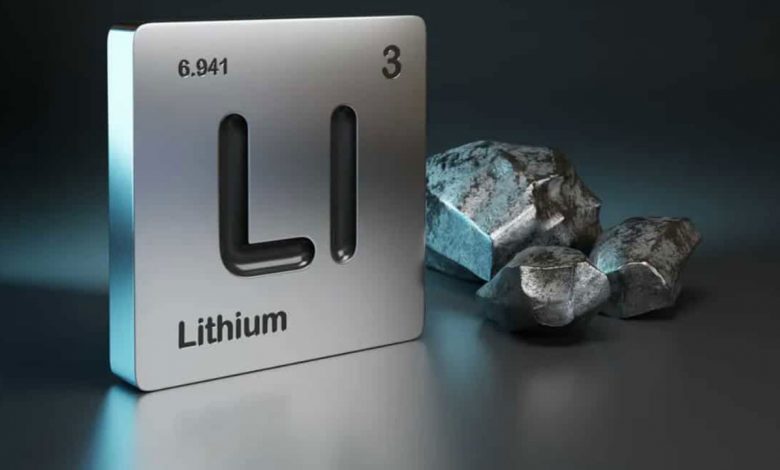Big Lithium Find in India – Rewards and Challenges
[GS Paper 3 - Infrastructure, Energy, Indian Economy]

Context – The discovery of 5.9 million tonnes of lithium in Jammu & Kashmir is a major boost for India’s electrification plans but mining is a high-risk, high-reward game in the ecologically sensitive Himalayas.
Lithium Findings
- Huge deposits – Authorities have found 5.9 million tonnes of lithium reserves in the Reasi district of Jammu & Kashmir.
- One of the largest mines – This may be the seventh largest deposit of the rare element, accounting for roughly 5.7% of all the reserves in the world.
- High grade quality – They are also said to be of a higher grade—550 parts per million (ppm) against the average 220 ppm—making it highly lucrative, given how lithium prices have soared in the last few years.
Prospects for India
- White Gold – Due to its ability to pack energy, it has utility across a range of sectors and has gained the moniker ‘white gold’.
- Soaring Prices – According to the International Energy Agency, lithium prices went up more than seven-fold between the start of 2021 and May 2022.
- Battery Economy – It is now primarily used to build the batteries that power modern appliances.
- EV Push – They also power electric vehicles, a segment that will corner most of the global lithium production in future.
- Import Cut – Currently, India does not have its own lithium resources and like crude oil, it is dependent on imports. In fiscal 2022, India imported lithium and lithium ion worth almost ₹14,000 crore.
Prospect for the Lithium Battery Industry
There is still some way to go before miners can extract lithium for industrial use. The discovery is ‘inferred’ or preliminary, the lowest of the three levels of estimations of a mineral deposit and the second of the four stages of exploration, as per the UN Framework Classification of mineral resources. There is much analysis to be done before its true value is confirmed.
Lithium Reserves in India
- Preliminary survey showed estimated lithium reserves of 14,100 tonnes in a small patch of land surveyed in Southern Karnataka’s Mandya district.
- Other potential sites include – Mica belts in Rajasthan, Bihar, Andhra Pradesh, Pegmatite belts in Odisha and Chhattisgarh, Rann of Kutch in Gujarat.
- India is currently dependent on imports for lithium cells and batteries. Over 165 crore lithium batteries are estimated to have been imported into India between FY17 and FY20 at an estimated import bill of upwards of $3.3 billion.
Issues with Lithium Mining
- Pollution in the valley – Open-pit-mining, refining, and waste disposal from these processes substantially degrades the environment, including depletes and contaminates waterways and groundwater, diminishes biodiversity, and releases considerable air pollution.
- Water intensity – Extracting lithium from its ore is highly water-intensive, taking about 2.2 million liters of water for one tonne of lithium.
- Seismicity threats – The Himalayas are a highly fragile and eco-sensitive region and as the recent Joshimath subsidence shows, it is vulnerable to long-term adverse consequences of unplanned development works.
- Displacement issues – Mining in the region could displace local communities and have significant social impacts. The region is home to a number of indigenous communities who could be negatively impacted by mining in the region.
- Undue activism over Kashmir – Mining in the region can attract opposition from environmentalists and so-called separatists disguised as national leaders.
Geostrategic Considerations and the China Factor
- Sensitive location – The new lithium discovery in J&K has significant geostrategic implications due to the geopolitical sensitivity of its location.
- Neighborhood hostility – The Union territory of J&K has a history of cross-border tensions, domestic insurgency, and terrorism.
- Resentment of local population – Lack of meaningful engagement with the local populace in the Li extraction project could introduce new frontiers of socio-environmental conflict.
- China Factor – China currently dominates the global lithium-ion battery manufacturing industry. Dependence on China for Li and other crucial metals and their derivatives is a source of energy security risks. Major economies such as the E.U., the U.S., Canada, and India are seeking alternative supplies to challenge China’s geopolitical dominance.
Conclusion
In effect, the proliferation of EVs could mean India becoming dependent on China, just like it is reliant on the Middle East for crude oil today. J&K’s reserves, however, provide a major opening for India to be self-reliant.






.png)



